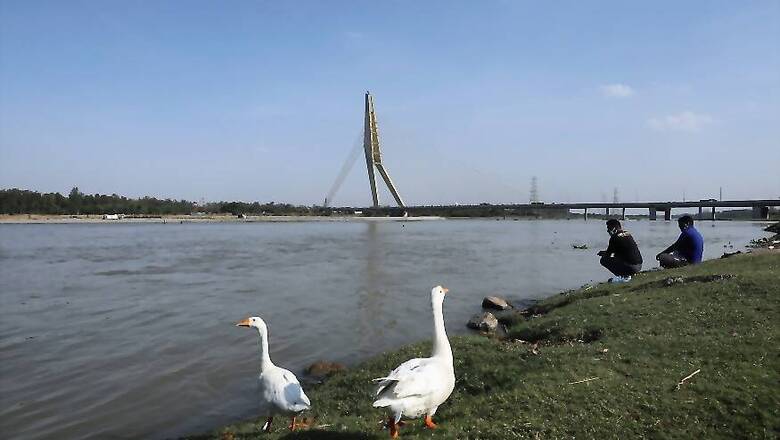
views
New Delhi: As Covid-19 spread across continents, governments around the world resorted to lockdowns and movement restrictions to promote social distancing and as a measure to contain the pandemic.
Beginning from China, where the new virus first originated in Wuhan, countries like Italy, France, and Germany in Europe, India, and the United States, have all implemented some form of lockdown.
With most business shut, construction activities halted, and minimal human movements, the global economy is facing its worst crisis in almost a century due to the pandemic and resultant lockdowns. However, the same restrictions have helped improve the air quality of some of the most polluted cities in the world.
According to air quality data compiled by IQAir over a lockdown duration of three weeks, air pollution levels (read PM2.5 levels) declined in most global cities around the world in comparison to the same period last year.
Per US Environment Protection Agency (EPA) standards, PM 2.5 levels up to 12 are considered ‘good’, considered ‘moderate’ between 12 and 35, ‘unhealthy for sensitive groups’ between 35 and 55, ‘unhealthy’ between 55 and 150, ‘Very unhealthy’ between 150 and 250, and ‘hazardous’ beyond that.
The annual mean exposure threshold as per World Health Organization (WHO) is 10 µg/m³. Since India is one of the most polluted countries globally, “an average resident is exposed to air pollution that exceeds the WHO target for annual PM2.5 exposure by more than 500 per cent.”
The same scale according to Indian standards is measure as ‘good’ up to 50, ‘moderate’ between 50 and 100, ‘poor’ between 100 and 200, ‘very poor’ between 200 and 300, ’severe’ between 300 and 400, and ‘hazardous’ beyond that.
Similar to Delhi, PM2.5 levels in Mumbai average at nearly 28 µg/m³ between March 23 and April 13, a reduction of 34% over 2019 and 43% over the 4-year average during the same time period.
Both Mumbai and Delhi recorded their best March air quality on record in 2020. “Delhi’s number of ‘unhealthy’ days in terms of air quality during the lockdown fell from 68% to 17%, while the same plummeted from 22.5% to 0.4% for Mumbai,” as per IQair report.
It should be noted that the study chose a three-week timeframe for each city to reflect either the period when the most stringent lockdown measures were in place or, during longer lockdown periods such as in Wuhan, to coincide with the ‘peak’ of daily reported COVID-19 cases.
In the US, Los Angeles on the west coast witnessed its longest stretch of clean air meeting the WHO guidelines (<10µg/m³) spanning 18 days between March 7 and 28. This stretch made March 2020 as Los Angeles’ cleanest month on record with PM2.5 levels averaging at a mere 5.6 µg/m³.
“Domestic heating is a significant source of air pollution in Rome...Increased reliance on residential heating systems, coupled with cool air inversions that trap particulate pollution in the atmosphere, may explain PM2.5 gains in the city as compared to 2019,” the study said.
(All graphs are courtesy of AirVisual IQAir)
















Comments
0 comment